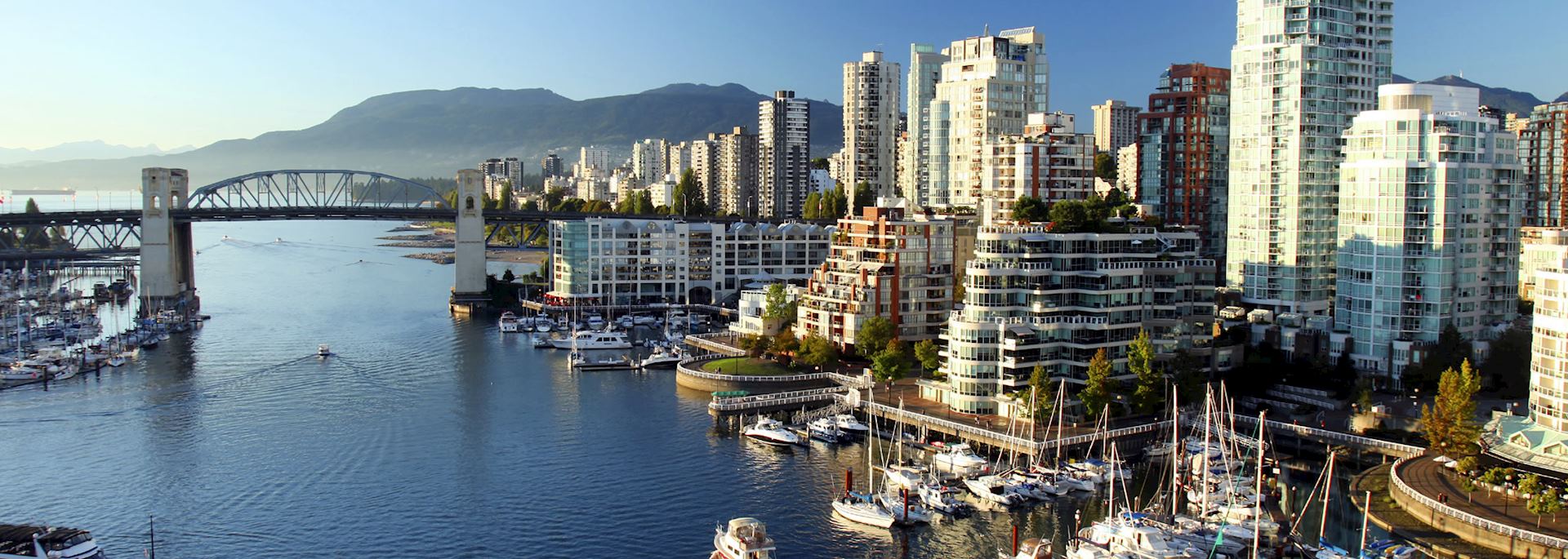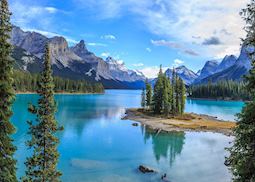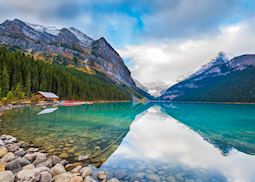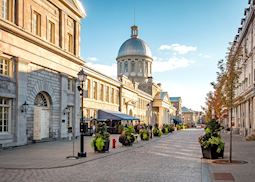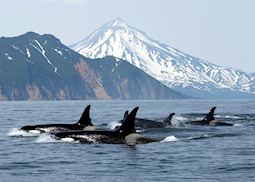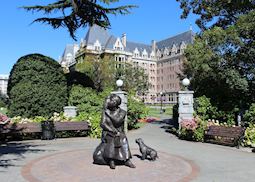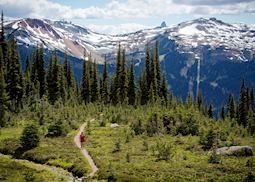
When choosing places to go in Canada, it’s easiest to focus on either the east or the west. In the east, you can explore the culturally rich cities of Ottawa, Toronto and Montréal, all well connected by train. French influences are palpable in Québec City, while down on the United States border Niagara Falls roars for attention. Looking west, the mountain towns of Jasper and Banff act as gateways to the Rockies, and wild Vancouver Island is a hotspot for whale and bear watching.
Whichever side of this monumental country you visit, Audley’s Canada specialists can draw on their own experiences to help you decide on the best places to include in your trip.
Whichever side of this monumental country you visit, Audley’s Canada specialists can draw on their own experiences to help you decide on the best places to include in your trip.
Speak to someone
who's been there
who's been there
-
617-223-4521617-223-4583
- Make an inquiry
Popular places to visit in Canada
Featuring heavily on our itinerary ideas for visiting Canada, these places are destinations that we know prove consistently popular with our travelers. How you choose to include them in your trip can be tailored into a route that best suits your preferences.
Canada places A-Z
- Alberta
- Algonquin Provincial Park Ontario
- Annapolis Royal Nova Scotia
- Anticosti Island Québec
- Banff Alberta
- The Bay of Fundy New Brunswick
- Bella Coola British Columbia
- British Columbia
- Bruce Peninsula & Fathom Five National Marine Park Ontario
- Calgary Alberta
- Campbell River British Columbia
- Canada’s Northwest Territories
- Canmore Alberta
- Cape Breton & Cabot Trail Nova Scotia
- Caraquet & the Acadian Peninsula New Brunswick
- The Cariboo British Columbia
- Cavendish Prince Edward Island
- Charlevoix & Saguenay - Lac St. Jean Québec
- Charlos Cove Nova Scotia
- Charlottetown Prince Edward Island
- Churchill and Northern Manitoba Manitoba
- Claresholm Alberta
- Dawson City The Yukon
- Deer Lake Newfoundland & Labrador
- Dinosaur Provincial Park Alberta
- Eastern Townships Québec
- Edmonton Alberta
- Ennadai Lake Canada’s Northwest Territories
- Fernie British Columbia
- Field British Columbia
- Fort Simpson Canada’s Northwest Territories
- The Gaspé Peninsula Québec
- Goderich and Lake Huron Ontario
- Gravenhurst Ontario
- The Great Northern Peninsula Newfoundland & Labrador
- Gros Morne National Park Newfoundland & Labrador
- Haida Gwaii British Columbia
- Haliburton Ontario
- Halifax Nova Scotia
- Head-Smashed-In Buffalo Jump Alberta
- Hecla Island Manitoba
- Hopewell Rocks New Brunswick
- Huntsville Ontario
- Îles de la Madeleine Québec
- Ingonish Nova Scotia
- Jasper Alberta
- Keno City The Yukon
- Killarney Provincial Park Ontario
- Kluane National Park The Yukon
- The Kootenays British Columbia
- Kouchibouguac National Park New Brunswick
- Kyle Saskatchewan
- La Malbaie Québec
- Lake Louise Alberta
- Laurentian Mountains Québec
- Liscomb Mills Nova Scotia
- Louisbourg Nova Scotia
- Lunenburg Nova Scotia
- Manitoba
- Manitoulin Island Ontario
- Marsh Lake The Yukon
- Mastigouche Wildlife Reserve Québec
- Mayo The Yukon
- Montréal Québec
- Mont-Tremblant Québec
- Nahanni National Park Canada’s Northwest Territories
- Naramata & Okanagan Valley British Columbia
- New Brunswick
- Newfoundland & Labrador
- Niagara-on-the-Lake Ontario
- North & West Ontario Ontario
- Northern Vancouver Island British Columbia
- Nova Scotia
- Ontario
- Ottawa Ontario
- Pelee Island Ontario
- Pictou Nova Scotia
- Port Hardy British Columbia
- Port Severn Ontario
- Prince Edward County Ontario
- Prince Edward Island
- Prince George British Columbia
- Prince Rupert British Columbia
- Princess Royal Island British Columbia
- The Purcell Mountains British Columbia
- Québec
- Québec City Québec
- Red Bay Newfoundland & Labrador
- Regina Saskatchewan
- Riding Mountain National Park Manitoba
- Saint Andrews by-the-Sea New Brunswick
- Saint John New Brunswick
- Salt Spring Island British Columbia
- Saskatchewan
- Spry Point Prince Edward Island
- St. John's Newfoundland & Labrador
- Sun Peaks British Columbia
- The Sunshine Coast & Desolation Sound British Columbia
- Terra Nova National Park Newfoundland & Labrador
- Tobermory Ontario
- Tofino British Columbia
- Toronto Ontario
- Trinity Bay Newfoundland & Labrador
- Twillingate Newfoundland & Labrador
- Vancouver British Columbia
- Vancouver Island British Columbia
- Victoria British Columbia
- Waterton Lakes National Park Alberta
- Wells Gray Provincial Park British Columbia
- West Point Prince Edward Island
- Whistler British Columbia
- Whitehorse The Yukon
- Winnipeg Manitoba
- Wood Buffalo National Park Alberta
- Writing-on-Stone Provincial Park Alberta
- Yellowknife Canada’s Northwest Territories
- Yoho National Park British Columbia
- The Yukon
